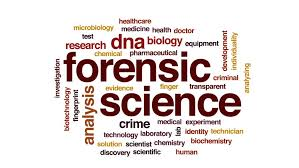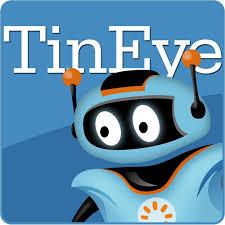CSI for Kids
CSI for Kids is a page for kids who love detective shows, and who dream of being american examiner some day.
Discovery Education
Begin the lesson by asking students what they know about forensics. Write their ideas on the chalkboard. Then have a discussion about what forensic scientists do—analyze physical evidence left from a crime or from a medical mystery using the tools of science. 2. Ask students if they know what physical evidence is.
The Science Spot
A resource for junior high science teachers and students. Also, you can sign up for a free subscription to the Forensic Teacher!
CSI: Web Adventures
Learn forensic science and apply your knowledge.
The CSI Web Adventures is funded by the National Science Foundation (Cases 1, 2, & 3) and the National Institute on Drug Abuse, National Institutes of Health (Cases 4 & 5). Without their help, the multi-organization effort would not be possible
Awesome Science Teacher Resources
This site is designed to provide high and middle school science teachers access to amazing materials!!!
O.Berk
UNDER THE MAGNIFYING GLASS: FORENSIC SCIENCE
At the Crime Scene
Perhaps the most well-known forensic scientists are those involved in crime scene investigation. Though hardly as high-action as it’s often represented on screen, this branch is concerned mostly with the physical sciences, which include fingerprinting, ballistics and firearms, accident reconstruction, bloodstain pattern analysis, and the collection of trace evidence.
- Recording Legible Fingerprints: Find the FBI’s guide to taking high-quality fingerprints and learn about their techniques here.
- Latent Fingerprint Examination: Experienced forensic scientist Ed German provides this website on fingerprinting.
- Fundamentals of Firearms ID: This website has extensive information on forensic firearm identification and interactive activities available.
- Bumper Car Physics: You can use Newton’s laws of motion to learn how to predict the outcome of bumper car collisions, and this approach is also useful in accident reconstruction.
- Bloodstain Tutorial: Here, you can learn what the pattern, size, shape, and location of bloodstains tell us and then put your knowledge to the test.
- Bloodstain Pattern Analysis: Learn the basics of bloodstain pattern analysis in this article.
- A Simplified Guide to Trace Evidence: This guide provides a comprehensive look at trace evidence and how to collect and test it.
- Trace Evidence: This Cornell resource covers how fibers and hair are used to aid in crime-solving.
In the Lab
Other forensic scientists prefer to focus on the biological and life sciences, usually in a laboratory or similar setting. They can be seen running tests, looking through the glass of a microscope at the evidence brought back from the scene, and using the tiniest of clues to piece together facts that can later be used in court.
- The World of Forensic Laboratory Testing: This article answers the question, “What is forensic laboratory testing?”
- DNA Extraction: Extract human DNA and learn how to analyze it in the University of Utah’s virtual laboratory.
- Forensics, DNA, and CODIS: Here, you can learn about DNA profiling and the FBI’s DNA database, CODIS.
- Create a DNA Fingerprint: PBS’s website lets you create a DNA fingerprint and use it to solve a crime.
- How DNA Evidence Works: Catching a criminal using DNA evidence is not quite as easy as CSI makes it seem, as this article demonstrates.
- DNA Testing: An Introduction for Non-Scientists: The illustrated explanation of DNA testing here is intended as an introduction to the subject for those who may have a limited background in biological science.
- Blood Typing: With a vast number of possible antigens and antigen combinations, your blood could be as unique as your fingerprint.
- The Society of Toxicology: Find a wealth of information for students interested in learning more about a career in toxicology.
In the Morgue
In criminal investigations that involve a homicide, the victim’s body is an important source of information. Medical examiners, or forensic pathologists, perform autopsies to establish the cause and time of death, collecting trace evidence and taking blood samples to be sent to forensic toxicologists to be tested. Forensic anthropologists are often called upon for cold cases and especially grisly crimes to analyze skeletal remains. This is one place where forensic art comes into play, as these artists can use the skull to reconstruct and create a rendering of the victim’s face as accurately as possible.
- Virtual Autopsy: Use case history and autopsy reports to try to correctly determine the cause of death.
- Visible Proofs: Could X-Rays Have Saved President McKinley? This comprehensive site examines famous deaths through the lens of forensic science and provides information on forensic technologies.
- Bodies and Bones: Try out this online tutorial covering aspects of forensic anthropology, from the crime scene to the laboratory.
- Get Body Smart: Human Skeleton: Get Body Smart presents a thorough, visual look at the human skeleton.
- Forensic Entomology: Insect presence can yield many clues to both antemortem and postmortem circumstances of a crime.
- Forensic Artistry: Read a comprehensive overview of many different aspects of criminal art.
Digital Forensics
Technology is becoming more and more integral in forensics, both as a tool to aid in solving more traditional crimes and as cybercrime becomes more prevalent.
- Digital Evidence and Forensics: The National Institute of Justice provides information on digital investigation techniques and tools, including mobile device forensics.
- Cybercrime: Learn how Interpol works to prevent and investigate cybercrime.
Forensic Games
- Interactive Investigators: Here, you can learn about a number of forensic disciplines while trying to solve a murder.
- CSI: Web Adventures: Work alongside the crime-solvers from the popular TV show in five different cases.
- The Case of the Barefoot Burglar: Try your hand at solving Cyberbee’s Case of the Barefoot Burglar.
- Investigating Forensics: This SFU Museum of Archaeology and Ethnology interactive site on forensic science allows you to work on a realistic case to solve the crime.
- The Blood-Typing Game: Learn about blood-typing on the Nobel Prize’s website.









